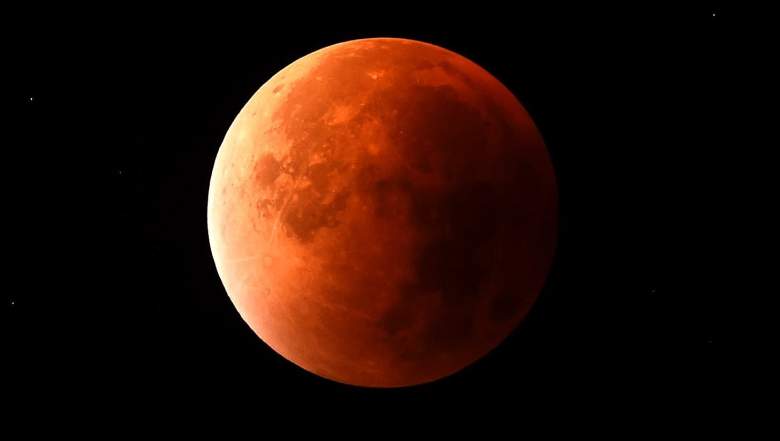
Getty Lunar Eclipse Blood Moon
The lunar eclipse is happening early tomorrow morning. It’s technically called the “Super Blue Blood Moon” because it’s the second full moon of the month, it’s slightly larger than normal, and it’s a lunar eclipse that will turn the moon a beautiful shade of red. But do you need to take any precautions when you’re looking at the lunar eclipse, like you did for the solar eclipse?
No. You don’t need any special glasses to watch the lunar eclipse early on Wednesday morning. Unlike solar eclipses, you can look directly at the moon during the lunar eclipse and not damage your eyes. Of course, don’t look directly at the sun as it rises in the sky during the lunar eclipse. Your eyes can always get damaged when you look directly at the sun.
When you’re looking at a lunar eclipse, you’re only looking at the moon. And looking at the moon with the naked eye is always safe, unlike looking at the sun. So no, you won’t go blind if you look directly at the lunar eclipse and enjoy the beautiful red color of the moon. A lunar eclipse happens whenever the Earth is directly between the sun and the moon. (During a solar eclipse, in contrast, the moon is between the sun and the Earth.) So instead of seeing the moon’s shadow overtaking the sun, like we do in a solar eclipse, we see the Earth’s shadow overtaking the moon. Wee see red in the moon because the sun is “behind us,” and we’re essentially seeing the hues of a sunset cast on the moon.
The eclipse happens all across the United States, but your best view will be if you’re on the west coast. That’s because they’ll get to see the entire eclipse before the sun rises. Technically, the eclipse will begin on the west coast at 2:51 a.m. Pacific. But the best phase (the umbral phase) begins at 3:48 a.m. Pacific. That’s when the moon starts to move into the Earth’s shadow and turn red. Totality, which occurs when the moon is completely shadowed by the Earth, begins at 4:51 a.m. Pacific and ends at 6:07 a.m.
If you miss Wednesday’s eclipse, the next lunar eclipse is July 27 of this year. So you won’t have to wait as long as you did after the 2015 lunar eclipse. Unfortunately, that one won’t be visible in the U.S. — you can only see it if you’re in Africa, the Middle East, or India. The United States won’t see another lunar eclipse until January 21, 2019, about a year from now.